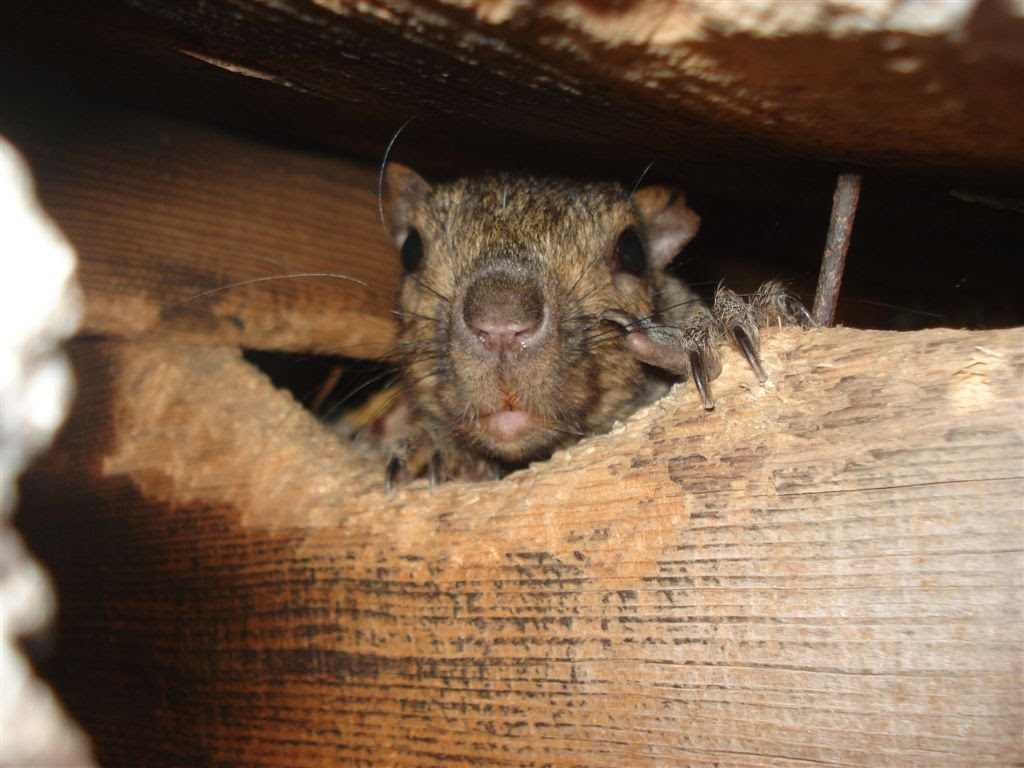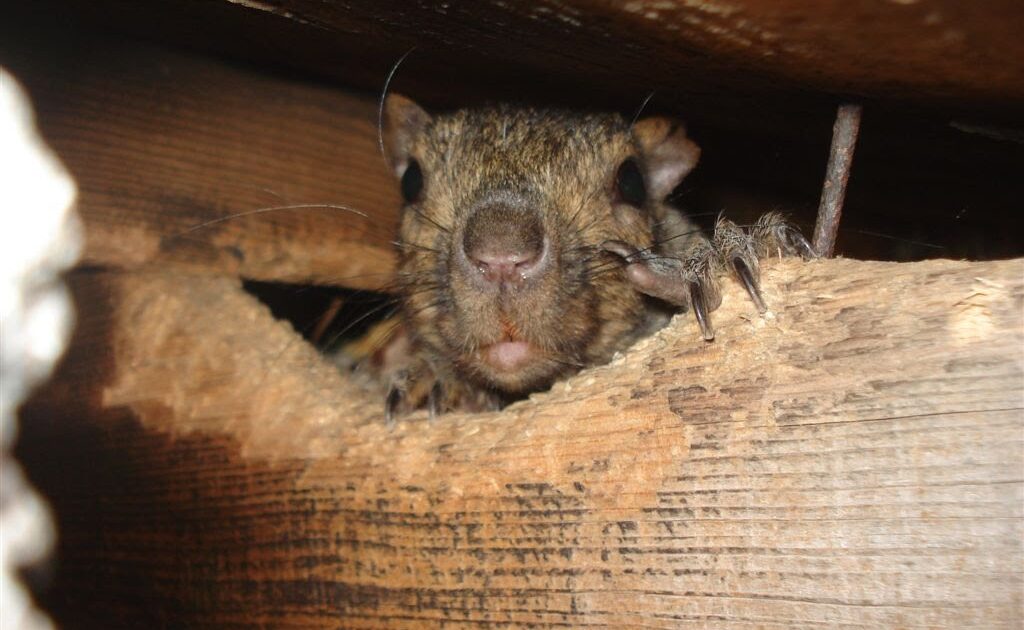In the winter, wild animals look for safe, warm shelters. Animals in urban areas are more likely to seek shelter in or around human structures; hence, the reason for a wildlife den in your home.
Bat
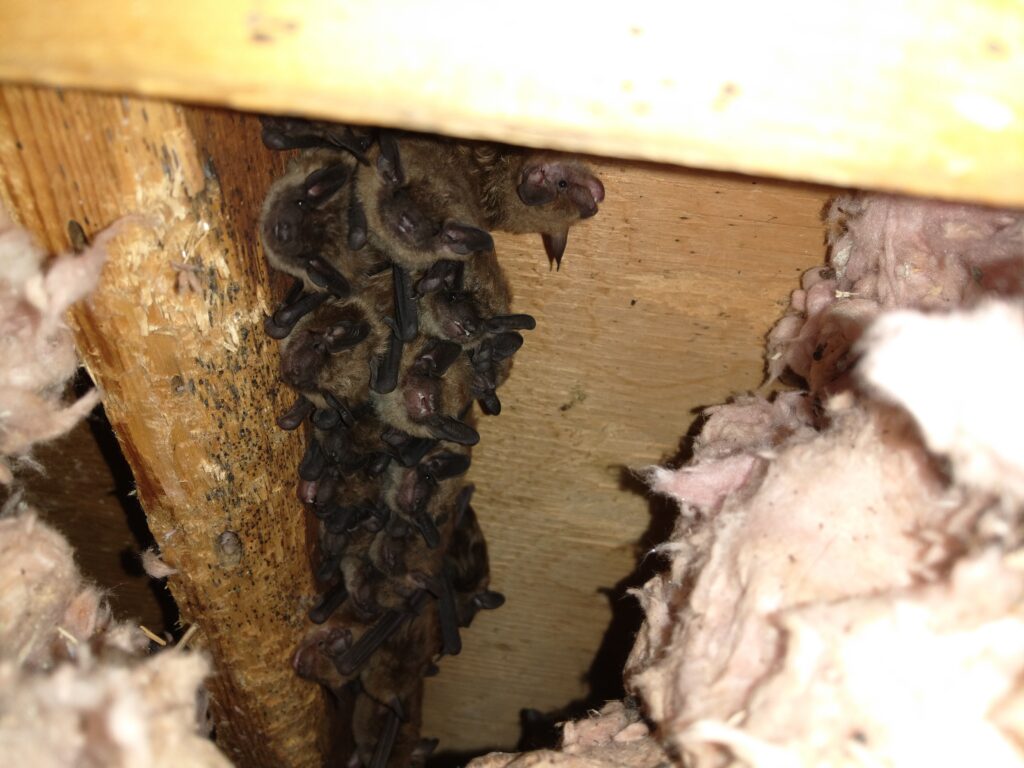
Bats roost as high off the ground as possible. You are most likely to find them in your attic or hanging from the rafters of a barn or garage.
When hibernating during the winter, bats’ body temperature drops significantly, so they need to find a roosting spot that is consistently warm. An attic is ideal because dark shingles absorb heat from the sun.
Bats are able to squeeze through very small openings, e.g., the space between a brick wall and a soffit. Once inside, bats hang from the ceilings wherever they can get a good grip. A bat can cause wildlife damage by contaminating its roosting spot with its feces.
Squirrel
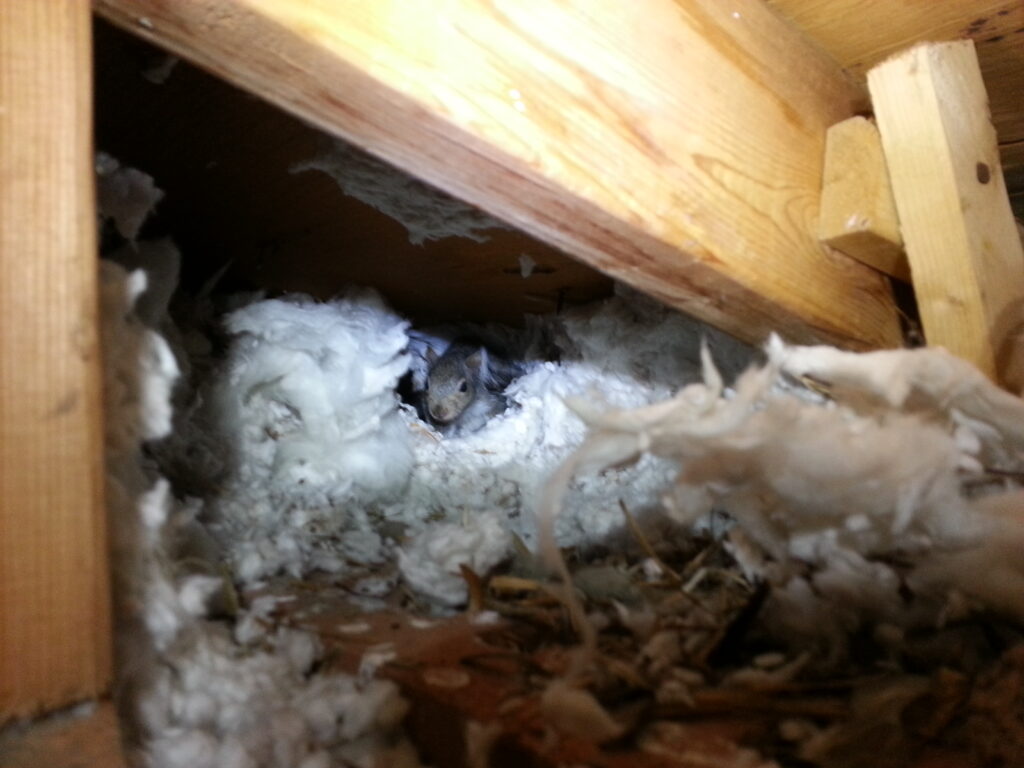
Because squirrels don’t hibernate, they build nests called dreys out of leaves and twigs or sometimes paper or garbage. Sometimes a squirrel builds a drey up in the branches of a tall tree. Squirrels also build nests in the hollows of trees or in the attics of homes, both of which provide protection from cold.
Squirrels can chew on soffits, fascia, vent covers, or wherever there is a small opening by which they might get into the attic. Squirrels are known to chew on roof beams and electrical wires, causing structural damage and fire hazards.
Squirrels have to collect and store food for the winter, hiding their food in small spaces such as wall voids.
Mice
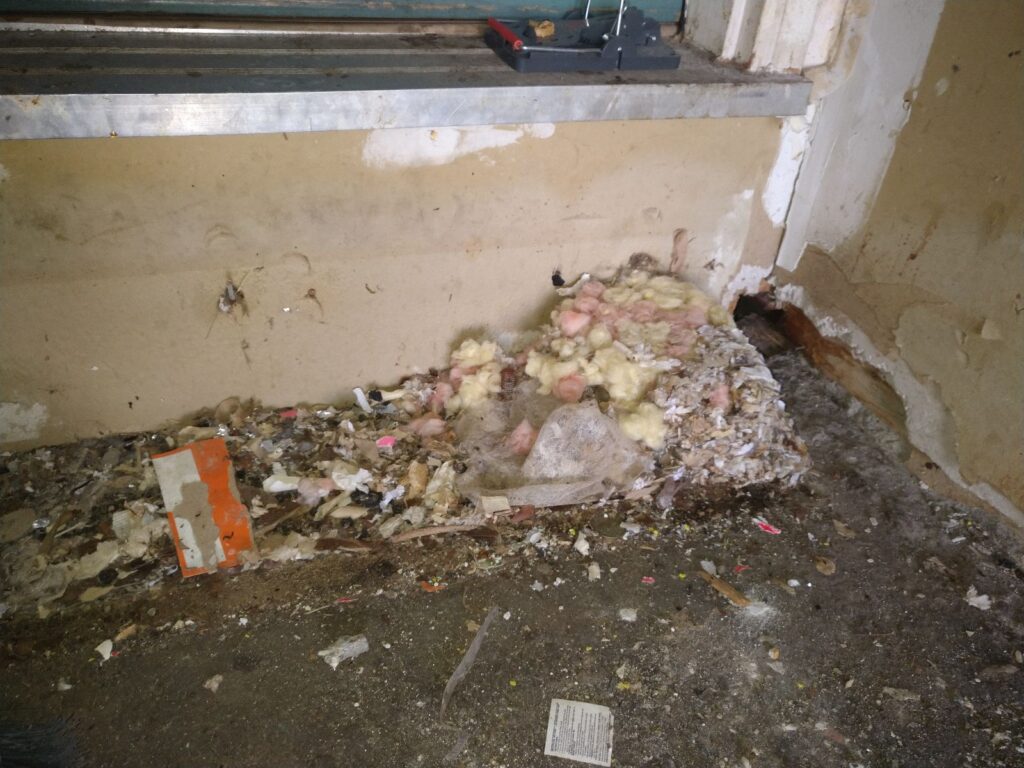
Mice damage is similar to squirrel damage. Mice make nests like squirrels, but a mouse nest usually has a dome shape with a single opening. Mice are more likely to make nests out of materials that they find in the house, such as fabric or insulation, shredding the materials first so that the nest resembles a mound of garbage. Basements, attics, and wall voids are common sites for mouse nests.
Some species of mice carry hantavirus that spreads through their urine and feces. It can cause severe respiratory ailment and death.
Skunk
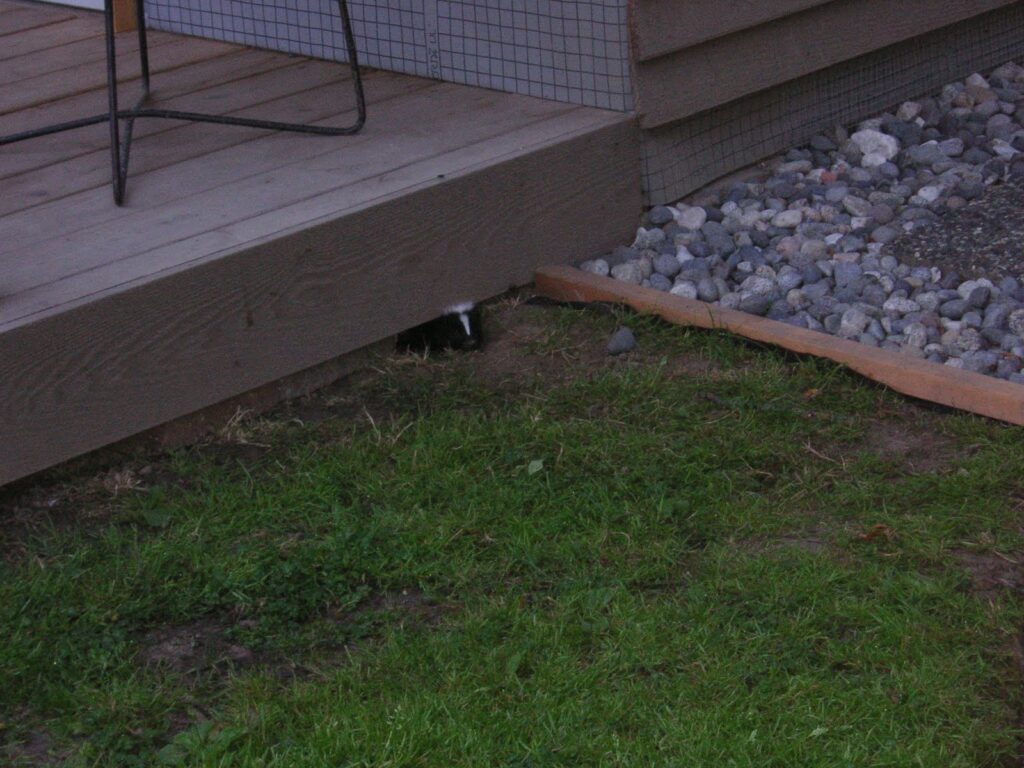
Skunks’ first line of defense is their odouriferous spray. If spraying doesn’t work, or they can’t spray, they may bite and scratch in self-defense and are known to carry rabies. However, skunks aren’t aggressive animals. They prefer to run away from danger.
Skunks are burrowing animals. They may tear up your yard looking for food. They also like to dig dens under sturdy objects to provide some protection or use dens dug by other animals. Skunks in your yard may dig a burrow under the following structures:
- Porch
- Shed
- Garage
- Home addition
Because skunks fear humans, they try to build dens in out-of-the-way areas, e.g., a crawlspace rather than a full basement.
Usually, the entrance to a skunk burrow is clear and smooth. In the winter, skunks may cover the opening to keep in warmth. If you see a hole that you think might be a skunk burrow, fill in the opening with dirt. Skunks remaining in the burrow will probably remove the dirt before you come back. Skunks use communal latrine sites to urinate and defecate, so you may find their droppings nearby.
Raccoon
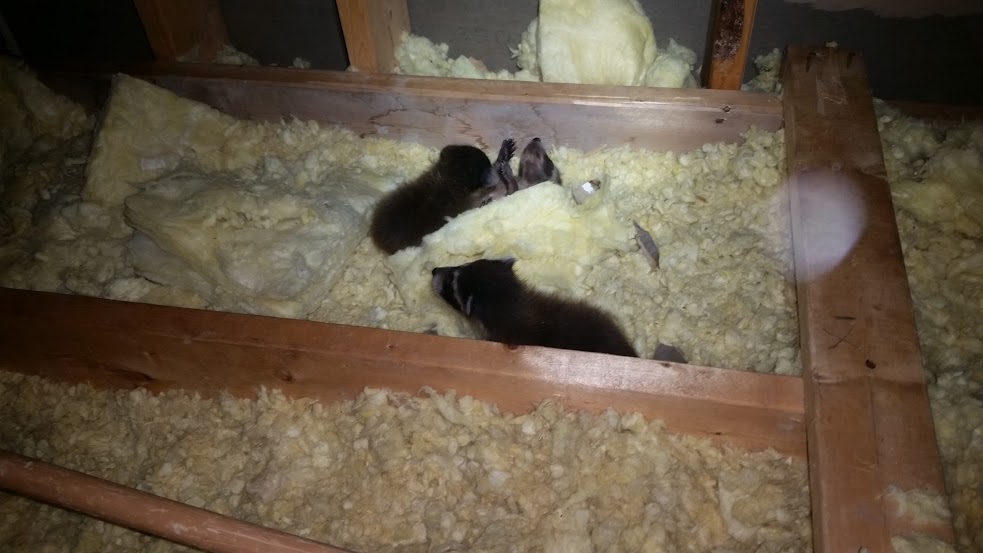
Raccoons prefer to find a den abandoned by another animal. Therefore, you may find raccoons living under structures on your property, especially if you have had skunks in the past. Unlike skunks, raccoons are good climbers and often make dens in trees. Thus, you are just as likely to find raccoons in the attic.
Raccoons have strong front paws with nimble toes and sharp claws, so they can exploit vulnerabilities in your home’s exterior to make a hole large enough to crawl through. They have been known to rip off shingles and fascia. Raccoons are intelligent enough to apply problem-solving capabilities and can be very tenacious in going after something they want.
Once they get inside your attic, raccoons can tamp down insulation bats so that they are no longer as effective. They may chew through electrical wires to make more space to move around. Raccoons may be infected with dangerous parasites and can carry rabies. Like skunks, raccoons make latrine sites near their dens, and their excrement can contain pathogens and parasites such as roundworms.
Locating a Den Site
It can be difficult for you to locate all the wildlife damage and dangerous to try to restore it yourself. Wildlife make their way into high and hard-to-reach areas that could cause you injury during your attempt to locate the den site. Skedaddle technicians come equipped with the proper tools to reach these areas safely and are trained to remove wildlife that may be defensive and attack. Our comprehensive humane removal services include full attic restoration. Contact us for more information.
